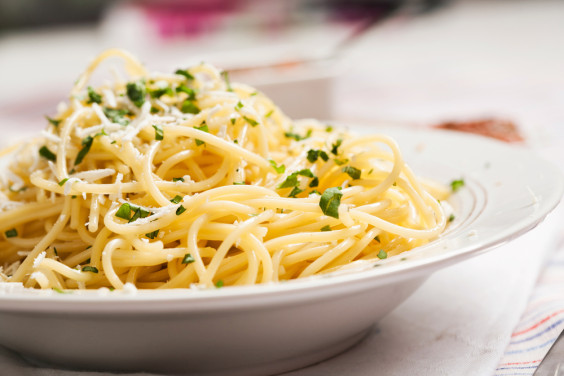
While living in Spain, this writer presented her Spanish hosts with a cookbook illustrating the Jewish and Arab roots of Andalusian cooking. Particularly in Spain, land of jamón, it can be hard to imagine a flurry of Semitic chefs, but across Western Europe Jews have often influenced the cooking of their countrymen by making modest changes to standard fare and importing foods from their most recent port of call. The latest surprise in Jewish culinary history? The delicious mash-up of pasta, eggplant and kosher salami that is Jewish Italian cuisine.
Sephardic Jews from Libya, Tunisia and Iran brought flavors of artichokes, lemon, apricots, and other delicacies to the already produce-rich diet of regions like Tuscany. Innovation was key: where favorite Italian snacks, like prosciutto, chafed against Jewish observance, Italian Jews were ready with a fail-safe, delicious dupe: goose prosciutto. And pasta on Sabbath afternoon despite not using electricity? Just leave some ruota di farone on the hot plate, no problem.
Italy’s already small Jewish population dwindled during the Holocaust, but chefs like Joyce Goldstein in Cucina Ebraica: Flavors of the Italian Jewish Kitchen and of course Joan Nathan have helped to revive their delicious contributions for American cooks. So don’t just stand there: fry a carciofo already.





